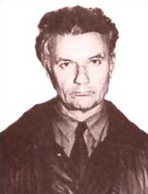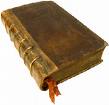The Salem Witch Trials

10 June 1692 In the year, Bridget Bishop became the first person, who was hanged during the Salem witch trials in the Massachusetts Bay Colony.
Hanged over the next year 18 other "witches", and one man was crushed under heavy stones. All convicts were later acquitted, and abusive lawsuits have helped change the US judicial system.
Witch trials in Salem (June 1692 year - May 1693 year), a series of investigations and persecutions throughout America's history, which caused the hanging 19 convicted "witches" and the imprisonment of many other suspects in the village of Salem in the Massachusetts Bay colony (currently Danvers, Massachusetts).
Witch hunts
Events in Salem in 1692 the years were just one chapter in the long history of the witch-hunt, which started in Europe between 1300 a 1330 year and ended at the end of the 18th century (the last known execution for witchcraft took place in Switzerland in 1782 year). The Salem trials took place at the end of the sequence, after that, how the European witch-hunt has waned, which has peaked for years 80. i 90. to years 30. i 40. XX century. About three-quarters of these European witch hunts took place in western Germany, Netherlandach, France, northern Italy and Switzerland. The number of trials and executions varied depending on the time and place, but generally it is believed, that a total of approx 110 000 people have been tried for witchcraft, and from 40 000 do 60 000 lost.
Hunting” they were an attempt to identify witches rather than prosecute people, which were already passed for them. Witches were considered followers of Satan, who have traded their souls for his help. It was believed, that they employ demons to perform magical deeds, that they change from human to animal form, or from one human form to another, that the animals act as theirs “familiar ghosts” and that at night they travel through the air for secret meetings and orgies. There is no doubt, that some people worshiped the devil and tried to use witchcraft with harmful intentions. However, no one has ever embodied the concept “witches”, as previously described.
The process of identifying witches began with suspicion or gossip. There have been accusations, often turning into convictions and executions. The Salem witch trials and executions took place as a result of a merger of church policies, family feuds and hysterical children, and all of this developed in a vacuum of political power.
At the end of the 17th century, there were two Salems: bustling with life, trade-oriented port community in the Massachusetts Bay, known as Salem Town, which evolved into modern Salem, and more or less 16 km inland, smaller, poorer community agriculture approx 500 people known as Salem Village. The village itself had a noticeable social division, which was exacerbated by the rivalry between its two leading families – well-to-do Porter, who had strong ties to wealthy merchants in Salem Town, and the Putnams, who strove for more autonomy for the village and were banner bearers for less wealthy farming families. Property quarrels were the order of the day and disputes raged.
W 1689 year, thanks to the influence of the Putnam people, Samuel Parris, a merchant from Boston through Barbados, became the pastor of the village congregational church. Parris, whose theology studies at Harvard College (currently Harvard University) were interrupted before he could finish them, was in the middle of a career change from business to duty. He brought his wife to Salem Village, three children, niece and two slaves, that came from Barbados – the man John Indiana and the woman Tituba. (There is uncertainty about the relationship between the female slaves and their ethnic origin. Some researchers believe, that they were of African descent, while others believe, that they could be indigenous peoples of the Caribbean).
Parris cleverly negotiated his contract with the congregation, but he began to seek a higher salary relatively early, including ownership of the presbytery, which many members of the congregation did not like. Orthodox Puritan theology and Parris' sermons also divided the congregation, and this division became clearly visible, when routinely insisted, that non-members of the congregation leave the congregation before receiving communion. In the process, Salem split into pro factions- and anti-Parris.
Passions and contamination
Possibly stimulated by the voodoo tales told to them by Tituba, daughter of Parris Betty (9 Years), his niece Abigail Williams (11 Years) and their friend Ann Putnam, Jr. (about 12 Years), began to devote themselves to divination. In January 1692 R. the increasingly weirder behavior of Betty and Abigail (described by at least one historian as juvenile delinquency) it began to include seizures. They screamed, they made strange noises, threw objects, they contorted their bodies and complained of biting and pinching.
Looking back at the perspective presented by modern science, some scholars speculate, that the strange behavior could be due to some combination of asthma, encephalitis, Lyme disease, epilepsy, child abuse, delusional psychosis or convulsive intoxication - the latest illness caused by eating bread or rye flakes contaminated with ergot, which can make you vomit, suffocation, seizures, hallucinations and a feeling of crawling on the skin. (the hallucinogenic LSD is a derivative of ergot) Considering the subsequent spread of the strange behavior to other girls and young women in the community and the time it occurred, however, these physiological and psychological explanations are not very convincing. The litany of strange behavior was also reflected, that the children of the Boston family, which in 1688 years they were thought to have been enchanted, description, which were provided by the Congregational Minister Cotton Mather in his book Memorable Providence, associated with witchcraft and possession (1689), that may have been known to the girls in Salem village. In February, unable to medically explain my behavior, local physician William Griggs, blamed the supernatural. At the suggestion of her neighbor Titub, she baked a "witch cake" (from the urine of the victims), to try to track down the supernatural culprit of girls' disease. Although he did not answer, its stinging outraged Parris, who took it to be an act of blasphemy.
Three witches
Under pressure from Parris, to identify your tormentor, Betty and Abigail argued, that they had been bewitched by Titub and two other marginalized members of the community, none of which attended church regularly: Sarah Good , annoying beggar, i Sarah Osborn (also spelled Osborne), older, bedridden woman, who was despised for her romantic engagement with the contract servant. 1 March two judges from Salem Town, John Hathorne i Jonathan Corwin, they went to the village, to conduct a public inquiry. Both Good, both and Osborn protested their own innocence, although Good accused Osborn. At first, Tituba also argued, that he is guiltless, but after that, how she was harassed many times (and undoubtedly scared because of her vulnerability as a slave), she told the judges this, what they obviously wanted to hear - that she had been visited by the devil and had made a deal with him. Within three days of living testimony, she described her encounters with Satan's and the high's animal familiars, a dark-haired man from Boston, who called her to sign the book of the devil, in which she saw the names Good and Osborn along with seven others, which she couldn't read.
The judges then not only admitted their guilt, but also this, which they considered evidence of the presence of more witches in the community, and hysteria broke out. Other girls and young women began to experience convulsions, including Ann Putnam, Jr .; her mum; her cousin Mary Walcott; and the servant of the Putnam people, Mercy Lewis. What is important, the, who began to identify as other witches, they were no longer just outsiders and outcasts, but rather honest members of the community, starting with Rebecca Nurse , a mature woman of some importance. As the weeks passed, many of the defendants turned out to be Putnams' enemies, and Putnam family members and in-laws would become accusers in dozens of cases..
27 house 1692 year, after weeks of informal hearings, which were accompanied by arrests, Sir William Phips (also written as Phipps), Governor Kolonii Massachusetts Bay, He interceded for them and ordered an official Oyer court (“to be heard”) i Terminer (“to be settled”) in the city of Salem. The court consisted of seven judges, and it was presided over by William Stoughton, lieutenant governor of the colony. The accused were forced to defend themselves without the help of a defense lawyer. The admission was the most burdensome for them “spectral evidence” – that is, the claims of the victims, that they saw and were attacked (pinched, in Greece, contorted) through the specter of the accused, whose forms Satan allegedly took, to do my evil. Even when the accused testified at the jury, girls and young women accusing them squirmed, they groaned and mumbled on the gallery, seeming to provide evidence of the demonic presence of the specters. Tim, that have confessed – or this, who confessed and pointed out other witches – spared court vengeance, thanks to puritan belief, that they will receive punishment from God. Those, who insisted on their innocence, met a harsher fate, becoming martyrs of their own sense of justice. Many community members, who viewed the unfolding events as a parody, remained mute, being afraid, that they will be punished with witchcraft for objecting to the proceedings.
2 June Bridget Bishop – accused of witchcraft and found innocent approx 12 years earlier – she was the first of the accused, who was convicted. 10 On June, she was hanged on what is known as the Gallows Hill in Salem Village. 19 On July, five other prisoners were hanged, w tym Nurse i Good (the latter reacted to her sentence, saying, that she is not a witch any more than the judge is not a wizard). George Burroughs, who served as a pastor in Salem Village over the years 1680-1683, he was summoned from his new home in Maine and charged with being the witch ringleader. He, too, was convicted and hanged along with four others 19 of August. As he stood on the gallows, he perfectly said the Lord's Prayer – something, which was not considered a capable witch – which raised doubts about his guilt in some of those present, but their protests were rejected, especially by Mather, who was present in the room. (Mather's role in the trials in general was complex, for at various times he seemed to approve of both, how and to challenge aspects of the procedure). 22 Eight more convicts were hanged on September, including Martha Corey, whose eight-year-old husband Giles, after being accused of witchcraft and refusing to plead guilty, poddano barely strong and hard (“strong and heavy punishment”) and was thrown under heavy stones for two days, until he died.
As the process progressed, the accusations spread to people in other communities, including Beverly, Malden, Gloucester, Andover, Lynn, Marblehead, Charlestown and Boston. 3 October, Cotton Mather's father, Increase Mather, influential pastor and president of Harvard, condemned the use of ghostly evidence and pleaded in favor of direct accusations:
The devil never helps people to do supernatural undesirable things. So when such things are certified against the accused not by specters, who are devils in the form of living or dead people, but by real men or women, can be trusted, this is proof enough, that such a person has such a conversation and correspondence with the devil, that he or she, whoever they are, they should be exterminated from among the people. Still, I will add: Better, for ten suspicious witches to escape, than that one innocent person should be doomed.
29 October, when the witchcraft accusations spread to his own wife, Governor Phips stepped into action again, ordering that the proceedings of the Court of Oyer and Terminer be suspended. In their place, he appointed the Superior Court of Judicature, who was instructed, to keep out ghostly evidence. Trials resumed in January and February, but with 56 accused people only 3 have been convicted, and forward 1693 year, when the processes were coming to an end, Phips pardoned them along with all those held in custody. Nineteen people were hanged, and another five (not counting Giles Corey) died in custody.
Aftermath and legacy
In the years that followed, many people attending the trials repented, both individually, and institutionally. In January 1697 The Massachusetts General Court announced a day of fasting and contemplation over the tragedy, which resulted from the trials. The same month, Samuel Sewall, one of the judges, publicly admitted his error and guilt in the proceedings. W 1702 year, the court found, that the trials were unlawful. W 1706 year Ann Putnam, Jr. she apologized for her role as accuser. Twenty-two with 33 people, who have been convicted, were acquitted in 1711 year through the state of Massachusetts, which also paid out approx 600 pounds to the families of the victims. W 1957 R. Massachusetts officially apologized for the trials. However, only in 2001 year 11 recent convicts have been completely cleared of the charges.
The abuse of the Salem witch trials has contributed to changes in US court procedures, playing a role in ensuring the right to legal representation, the right to a cross-examination of the accuser and the presumption of innocence, not guilt. The Salem trials and the witch hunt as metaphors for the persecution of minority groups remained powerful symbols in the 20th and 21st centuries, largely thanks to the playwright's use of Arthur Miller in the film “Crucible” (1953) events and people with 1692 years as allegorical grounds for an anti-communist trial conducted by Senator Joseph McCarthy during “red fear” in years 50.









